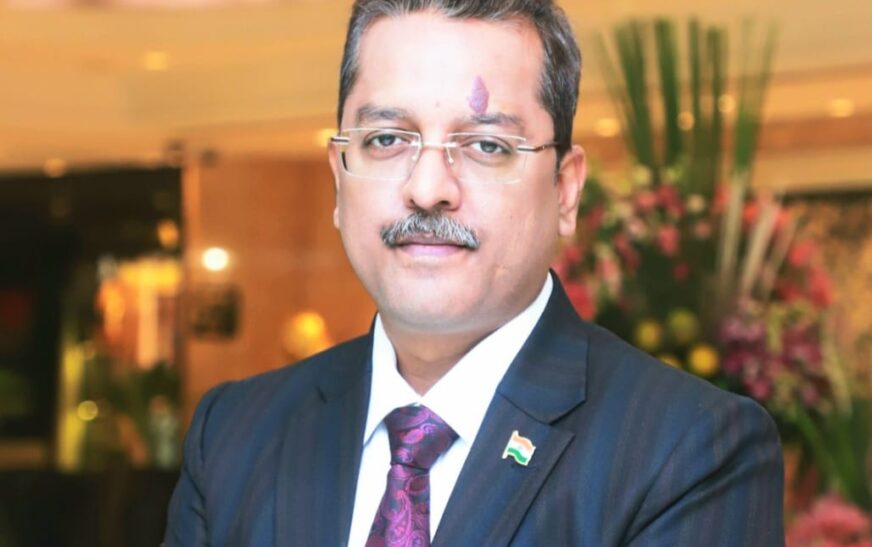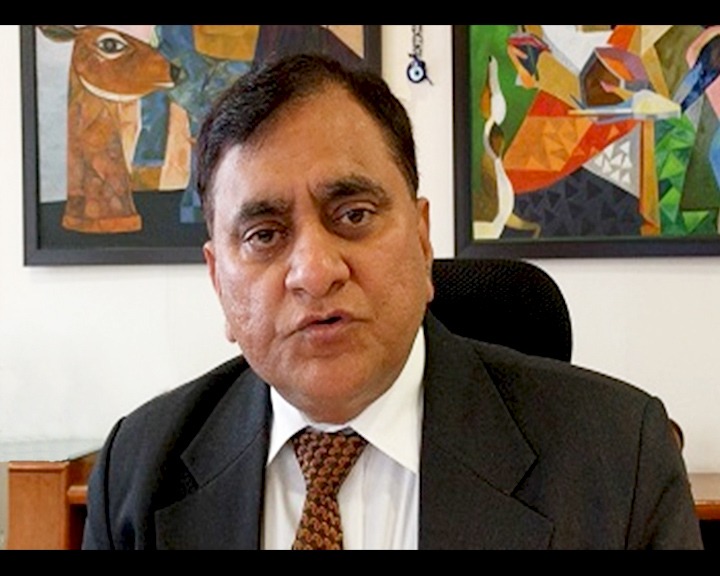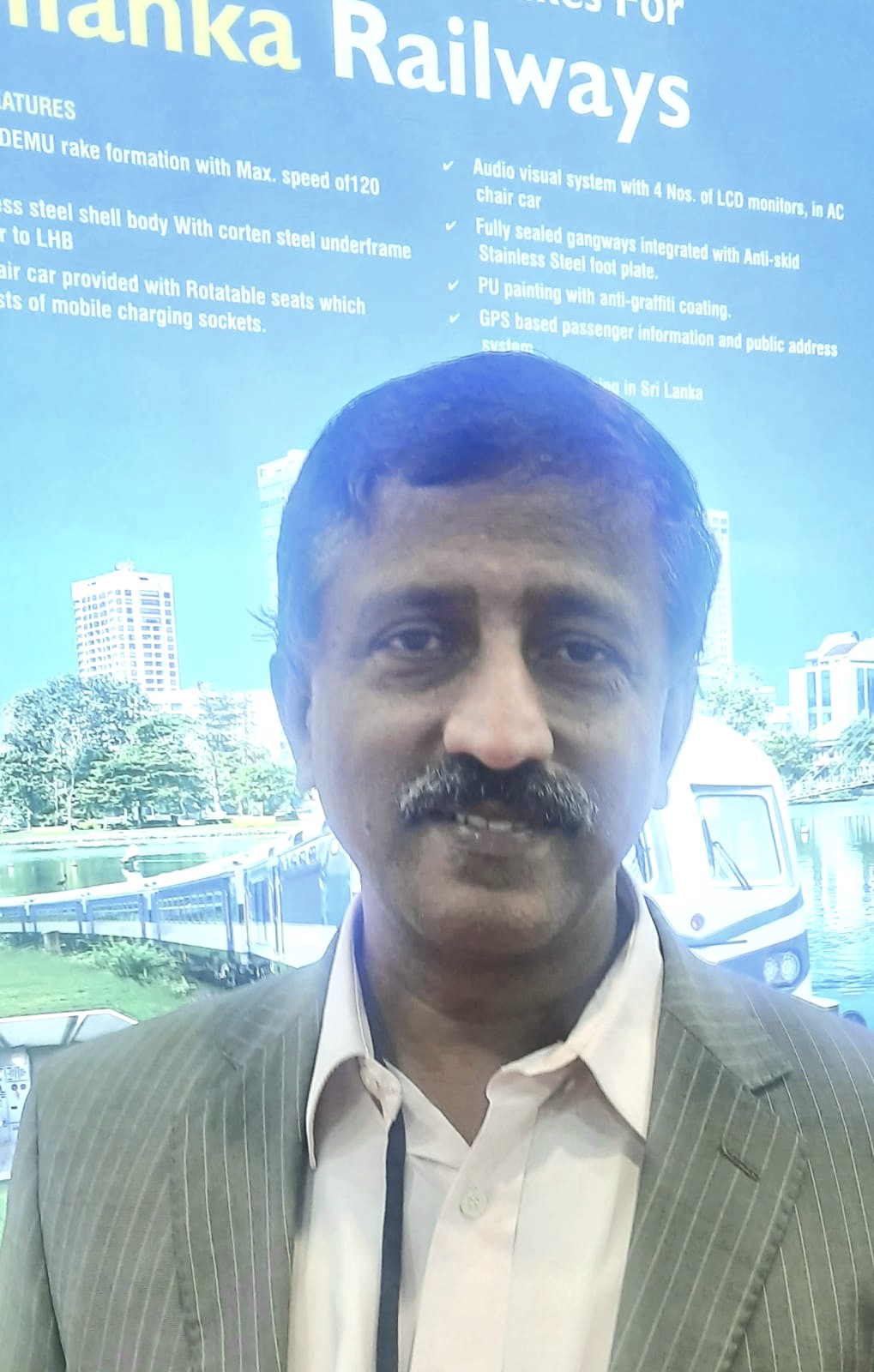Abhijeet Sinha serves as the National Program Director for the Ease of Doing Business (EoDB) program and the Project Director for National Highways for Electric Vehicles. He also holds the position of President at the Charge Point Operators Society of India, is a former CAG Member, and acts as Country Director for India and the UAE at Advance Services for Social & Administrative Reforms (ASSAR), where he additionally oversees the National Highways for Electric Vehicles project.
Sinha, a technocrat turned policy entrepreneur, specializes in cross-domain consulting on the Hybrid Annuity Model (HAM). He is also pioneering innovative energy infrastructure projects, such as the Annuity Hybrid E-Mobility (AHEM) for National Highways for Electric Vehicles (NHEV). This transformative mobility program aims to convert national highways and expressways into E-Highways, complete with charging stations and public transport fleets, under the EoDB initiative.
In an exclusive conversation with The Interview World at PHDCCI Sustainable Cities Summit- “Viksit Bharat@2047 – Building Resilient Cities of Tomorrow”, Abhijeet Sinha discusses the necessity of unlearning to decolonize the mindset, addresses the challenges of urbanization, provides insights into smart city projects, and highlights the scale and capacity of the Delhi-Jaipur electric highway. Here are the key insights from his interview.
Q: You’ve mentioned that India needs to ‘unlearn’ to become more inclusive and developed in the future. Can you elaborate on what you mean by this concept of ‘unlearning’?
A: Unlearning, for me, involves critically examining things imposed on us with deliberate intent. Without questioning the underlying reasons for their imposition, we risk accepting everything at face value.
At first glance, it may seem like there is a narrative at play, aiming to push products, solutions, and services from external industries into India. These offerings might not always be suitable for us, nor might they be the best fit for our needs. We need to reassess our core values. Before colonization, India managed waste and lived a lifestyle deeply connected to nature. Colonization disrupted this harmony, altering our food, culture, and education.
Historically, we did not consume sugar, refined flour, or polished rice until European influences introduced them. These changes came with specific intentions. Today, we must scrutinize the motives behind new introductions and evaluate whether they serve hidden agendas. Without this critical analysis, we risk accepting things uncritically.
Additionally, ESG compliance often comes with incentives and penalties. These rewards and pressures might not align with our needs as a growing economy. We should resist subscribing to external thought processes that carry hidden motives.
Q: How should India address the challenges of urbanization and the increasing migration from rural to urban areas?
A: Urbanization poses a significant challenge that demands a strategic approach rooted in personal values rather than conventional suggestions. When contemplating a move to a city, it is essential to define your vision clearly. When you visit the serene landscapes of Himachal, the rugged beauty of Uttarakhand, or the remote tranquility of Ladakh, you must consider what facilities and amenities align with your lifestyle. This focus on personal needs should guide your decision-making process.
It is crucial to recognize that smart city designs from Europe or other regions may reflect historical contexts, such as colonial strategies or military logistics, rather than contemporary needs. These designs, shaped by past agendas, may not suit the unique requirements of modern urban living. Instead, envision a smart city that integrates seamlessly with nature and fosters sustainability.
To achieve this, look beyond traditional models and draw inspiration from tribal communities. These groups have thrived for centuries in harmony with their environments, maintaining practices that ensure minimal waste and health resilience. Their sustainable lifestyles, characterized by zero garbage and low casualty rates, offer valuable insights into living well within ecological limits.
Historical and recent global crises, such as pandemics, have demonstrated the robustness of these communities. They remain relatively unaffected by widespread issues because their methods and lifestyles are inherently sustainable and resilient. As the world faces increasing environmental and health challenges, the knowledge and practices of these enduring communities become increasingly relevant. They provide a blueprint for creating urban spaces that are not only smart but also sustainable and adaptable to future uncertainties. Embracing these principles will help design cities that are both innovative and in harmony with the natural world.
Q: With nearly a decade having passed since the inception of the smart city project, how do you assess its current status? What do you believe are the reasons for its limited success so far?
A: Smart city projects encounter three core challenges that undermine their effectiveness. The first issue is the misalignment of financing structures with the innovative technologies driving these projects. Smart cities require advanced technology and novel planning approaches, which demand a procurement model different from traditional methods. Attempting to apply outdated procurement practices to the development of a smart city results in inefficiencies and misalignment with the project’s technological demands.
The second challenge is the slow pace of development due to various third-party dependencies. Smart city initiatives often involve complex elements such as land acquisition, population migration, and integration with existing infrastructure. These factors can significantly delay progress if not managed sustainably. The reliance on external parties and outdated processes can hinder timely execution and overall effectiveness of smart city projects.
The third issue is the disparity between smart city concepts within India and those on a global scale. There is a tendency to equate smart cities with high-tech solutions and fancy programs. However, a smart city in India—or anywhere else—does not necessarily require cutting-edge technology to be effective. A more practical approach focuses on fundamental infrastructure concerns such as transportation, drainage, and energy management. By addressing these critical areas, even cities located in challenging environments like hills or forests can be transformed into functional and efficient smart cities. Emphasizing practical solutions over flashy technologies ensures that the smart city concept has real-world applicability and sustainability.
Q: What infrastructure has been established to support electric vehicles along the Delhi-Jaipur EV highway?
A: The transportation routes connecting Jaipur to Delhi-Agra are fully operational, offering travelers the convenience of using either private cars or buses without the need to hire additional vehicles. Currently, temporary charging stations are available to support the fleet. However, we have ambitious plans to install major charging stations every 100 kilometers along these routes. These new stations will be as large, or in some cases even larger, than traditional petrol pumps. They will represent the third generation of refueling infrastructure, incorporating advanced technologies such as biofuel and hydrogen.
These strategically positioned stations will be integrated into the 5,500 kilometers of the Bharat Mala and Sagar Mala corridors. The project is financed through a blended approach, utilizing the Hybrid Annuity Model (HAM), which combines climate financing with innovative funding mechanisms. These stations will cater to a diverse range of vehicles, including electric buses, cars, two-wheelers, three-wheelers, and hydrogen-powered buses and trucks, supporting both local and long-distance travel.
Q: Can you provide an update on the current capacity of the charging stations? Has there been an increase in their capacity recently?
A: Charger capacity, durability, and reliance on charging infrastructure have all advanced to a global standard. This is not just a basic charging point or a second-generation petrol pump.
At present, locations can host between 40 to 60 chargers. Teams of engineers and electricians ensure these chargers remain operational. You can now have complete confidence that you will find a working charging station when you need one—an improvement from past uncertainties.
Additionally, these highways are equipped with advanced roadside assistance specifically for electric vehicles. If a diesel vehicle breaks down, the average wait time for a backup is approximately two and a half hours. However, on electric highways, if an electric car or bus experiences a breakdown, the wait time is reduced to just 30 minutes.
Moreover, you won’t need to make a call for assistance. Your vehicle is continuously tracked and monitored, with real-time data exchanged with infrastructure. In the event of a breakdown, the system immediately identifies your location, determines the nearest station, and dispatches the necessary support. The backup team arrives equipped with a battery, charger, and a repair crew. This innovative approach will revolutionize the experience of transitioning from diesel to electric vehicles.









